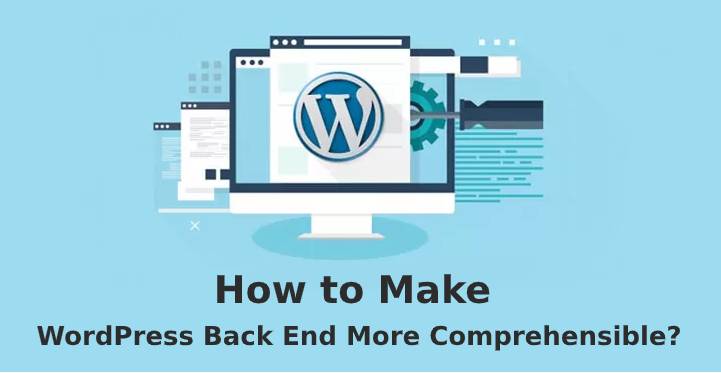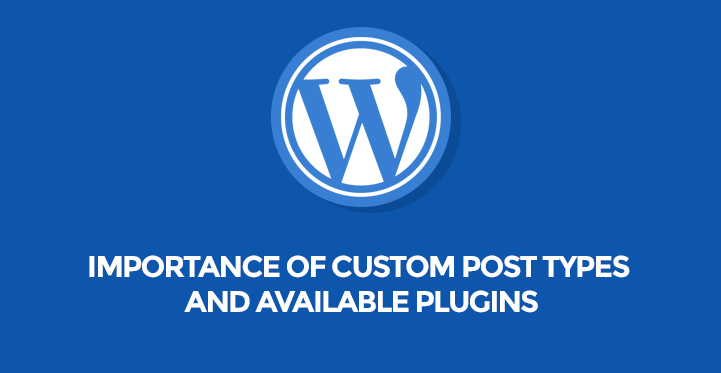When you use WordPress to develop your website, you offer your prospect to access different services. On requirement, they can set up any functionality right away followed by some simple clicks.
Table of Contents
However, the WordPress dashboard is filled with several features and options, which create several hindrances when it comes to choosing the appropriate alternatives.
The presence of multiple items in the menu, assorted litter, etc makes the WordPress back end difficult to access.
Moreover, if you are logging in to your WordPress for the first time, with the default customization, it will be hard to manage the menus and plug-ins rightly.
This is why the needs of improving the back end arrive. If you are looking for the simplest tricks of making the back end of your site more user-friendly, make sure to read till the end.
Avail of the Custom Post Types and Custom Fields
There are a lot of ways that can help increase the accessibility of your WordPress site. Among all, one of the finest ways is to take advantage of custom post types and fields.
Regardless to mention customizability is the most prevailing trait present in WordPress. However, in major cases, the users think of tailoring the themes, plug-ins, etc upon hearing the word customizing.
But, there is much more than that. The assistance of custom fields and custom post types will thoroughly enable you to handle the internal content of your site conveniently.
Custom Fields
No matter which editing plug-in you are using for your website, initially the content of your site remains in a clean slate. That is where the difficulty of arranging it occurs.
Most of you often wonder where to start. But with the custom field, dealing with the micro-level of WordPress back end is no longer an issue.
In fact, it works wonderfully and provides an instinctive experience in the case of content creation. By using the custom fields, you will get the chance of selecting the necessary plug-ins along with a smooth understanding of their interfaces.
Custom Post Types
Custom post types are typically the coordination of customary posts or pages. If you think from a prospect’s perspective, you will find out that the cosmetic advantages single-handedly are massive, which makes it inevitable to use.
WordPress employs the customary pages with their tags and categories for arranging the content by default. It might be fruitful but also it creates a lot of interweaves making it a complete mess with the addition of more content.
Moreover, unless a client utilizes essential steps ensuring a page to conclude in the right position, it will unfeasible to come across a fresh post on the front end of your site.
Through the custom post type, you can easily label each sort of content right on the menu of the dashboard. It helps the content managers to find a way of organizing the contents such as staff, events, press releases, etc. The presence of tags and categories will surely be there but the task of managing the items will get easier.
It is also worth mentioning that custom field or custom post types can only help to some extent, the rest of the responsibility is entirely upon the initiatives you implement to make WordPress back end feasible.
Make use of the Users Roles
The entire executive access of the WordPress dashboard is not mandatory for each and every user. However, it is your responsibility to offer your client with an admin account, the rest of the decision of handling it relies upon them.
WordPress is packed with stunning features of roles and capabilities that allow the users to access the platform on numerous levels.
If you login to your site using an editor account, the chances of withdrawing several of the advanced menu options are high. To sort out this inconvenience, it is better to switch to the admin or administrative account through a plugin in order to create a custom role.
Moreover, with the help of the admin account, your clients or prospects can effortlessly look for the suitable attributes upon their requirements. It basically works as a filter and eliminates unnecessary functions from the site.
Therefore, with user roles, you can male your WordPress back end understandable and at the same time ensures the security-check in a roundabout way.
Apart from the above-mentioned procedures, there is another way of making the back end of your WordPress site clear, unique, and easily accessible with a few highly-custom opportunities. If you are interested in knowing it, continue reading.
Take the assistance of WordPress Widget
Even if you take advantage of the above-mentioned methods, WordPress back end can still happen to organized be disorderly, which could create discomfort to your prospects.
But, you can simply solve it out by utilizing the widely popular WordPress widget entitled Handy Links. The widget is actually a combination of codes from different platforms. Through embedding the Handy Links, you will be able to relish two individual facilities.
Firstly, the set of codes helps in highlighting both ordinary and specific sites such as goods, custom post types, pages, etc. Secondly, it works on deactivating the previously set widgets in the dashboard.
The widgets that are by default set in the WordPress dashboards make it appear messier. To activate the Handy Links, all you need to do is taking a file and placing it in the WordPress directory known as /wp-content/plugins/ and after log-in to your site as usual.
After you successfully install and activate the discussed widget, you can incorporate your desired custom links by availing of the example codes.
While mentioning Handy Links, it is important to state that it is exhibited only to the users with the admin account. But, as it is customizable, you can choose to fit it as per your demands.
Conclusion
If you provide your prospects with a clean and aptly organized dashboard, they will feel comfortable and get their required items without much effort.
Once your website is able to give them ease and comfort, they will keep visiting you repeatedly, increasing your website’s genuine traffic.


